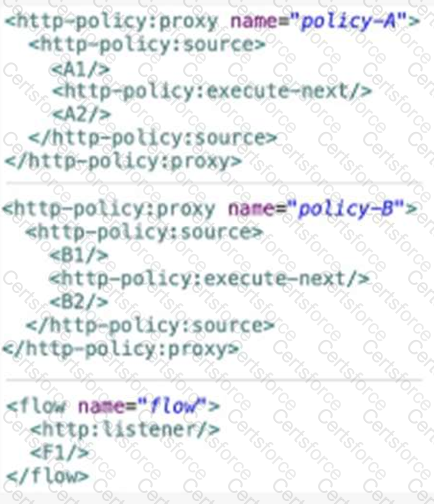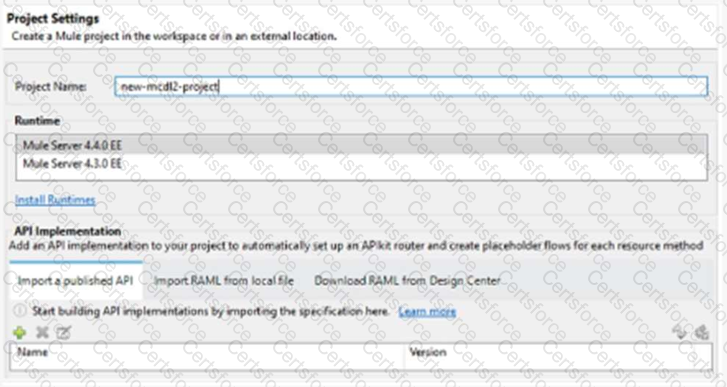Which configurations are required for HTTP Listener to enable mTLS authentication?
A Mule application contain two policies Policy A and Policy A has order1, and Policy B has order 2. Policy A Policy B, and a flow are defined by he configuration below.

When a HTTP request arrives at the Mule application’s endpoint, what will be the execution order?
Refer to the exhibit.

When creating a new project, which API implementation allows for selecting the correct API version and scaffolding the flows from the API specification?
A company with MuleSoft Titanium develops a Salesforce System API using MuleSoft out-of-the-box Salesforce Connector and deploys the API to CloudHub.
Which steps provide the average number of requests and average response time of the Salesforce Connector?
Which statement is true when working with correlation IDS?
An organization uses CloudHub to deploy all of its applications.
How can a common-global-handler flow be configured so that it can be reused across all of the organization’s deployed applications?
Two APIs are deployed to a two-node on-prem cluster. Due to a requirements change, the two APIs must communicate to exchange data asynchronously.